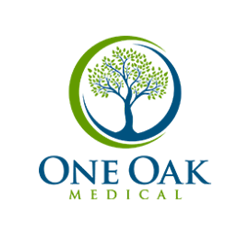Bunion Specialist
If you’re one of the three million people who suffer from painful bunions, Dr. Homam Badri can help. At One Oak Medical — with offices in Paramus, Wayne, Middletown, Point Pleasant, and Clifton, New Jersey, as well as Staten Island, New York — board-certified podiatrist Dr. Badri offers both surgical and nonsurgical treatment options to alleviate bunion pain and improve your mobility. To learn more about available treatment options for bunions, schedule an appointment online or by phone.
Bunion Q & A
What is a bunion?
A bunion is a bony bump that develops on the base of the joint of your big toe. The bump forms when your big toe is forced against the second toe, causing your joint to shift and stick out.
You can also develop bunionettes, or smaller bunions, on the joint of your little toe.
What causes bunions?
A common cause of bunions is wearing shoes that are too narrow or too tight. Structural defects in your toes or feet, or medical conditions such as arthritis, can also cause bunions.
What are the symptoms of a bunion?
The most common symptom of a bunion is a visible bump on the base of your big toe. You may also experience the following symptoms:
- Joint swelling or redness
- Soreness in the affected toe
- Corns or calluses
- Limited movement in your big toe
Bunions can also cause pain that comes and goes, or that is persistent.
You should schedule a consultation with Dr. Badri if your pain lasts for more than a week, if your bunion makes it difficult to wear shoes without pain, or if it is challenging to find shoes that properly fit.
If left untreated, bunions can result in additional foot problems, including hammertoe or bursitis, a painful inflammation of the fluid-filled sacs that protect your joints.
What treatments are available for a bunion?
Dr. Badri can confirm a bunion diagnosis using X-ray images of your foot. He creates a custom treatment plan based on the severity of your pain and mobility issues. Typically, Dr. Badri starts with noninvasive treatment strategies to alleviate your pain before recommending surgery or other invasive procedures.
Nonsurgical treatment options include over-the-counter pain relievers and anti-inflammatories. Dr. Badri can also administer cortisone injections to increase your comfort. He may suggest improving the style of your shoe to reduce pressure on your toe joints and have you avoid wearing tight-fitting or high-heeled shoes.
If these treatments don’t relieve your pain, Dr. Badri can perform surgery. Through surgery, Dr. Badri removes the inflamed tissue surrounding your joint or realigns your toe by removing part of the bone.
Stop suffering from bunion pain and schedule an appointment at One Oak Medical by phone or through the online booking feature.

